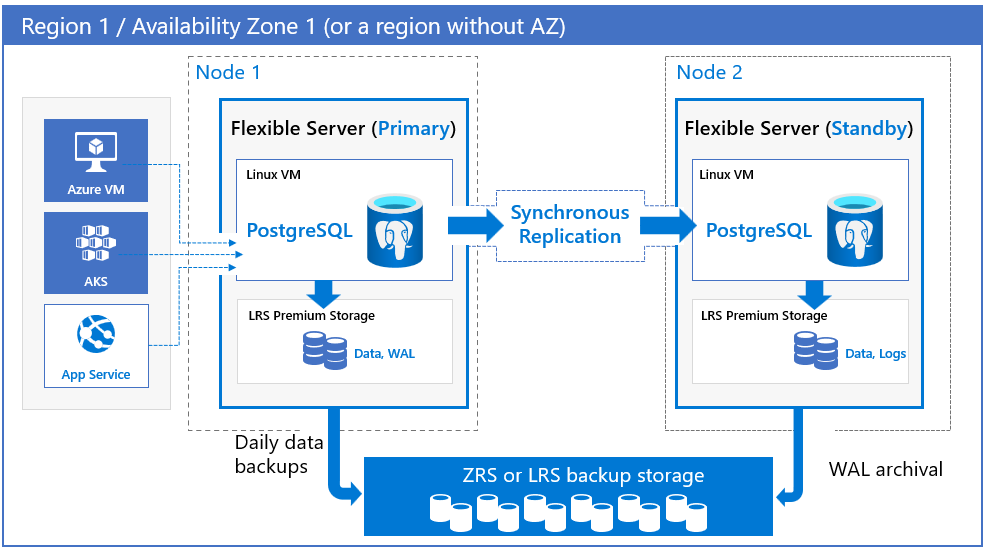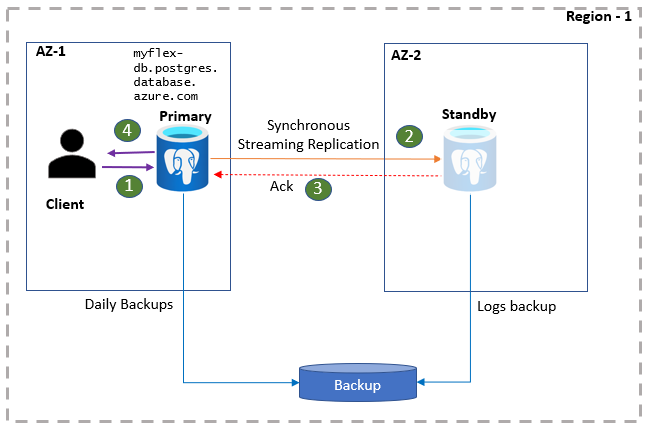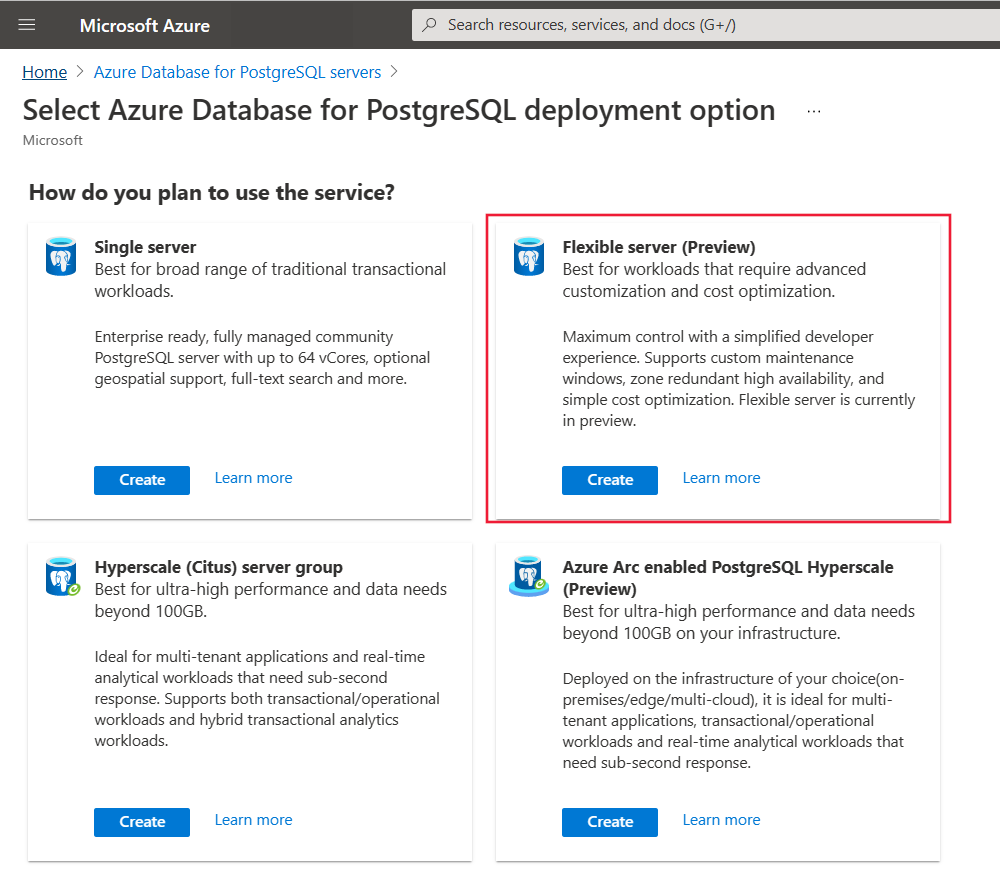

- #Azure database for postgresql flexible server how to
- #Azure database for postgresql flexible server full
This Azure article discussed the key differences between Azure PostgreSQL Single server and Flexible server.
#Azure database for postgresql flexible server how to
How to create Azure Database for PostgreSQL servers.You may also like following the articles below In terms of Security, It supports integration with Azure Active Directory.Īllows you to stop and start the server if required. Native logical replication is not supported. Here, it is based on Compute + Storage, which is 2x. Here, it is based on Compute + Storage which is 2x. Whereas here, TLS 1.2 and TLS 1.3 both are supported. Here, the supported networks are public access and private access.

Scalable for all the tiers except the Basic tier. The maximum storage size supported is 16 TB. The networks supported here are private link, virtual, and public access. Like offered in Azure Database for PostgreSQL server, a means for adding Private Endpoints shall be available to. The available tiers are Memory Optimized, General Purpose, and Burstable. Allow for Private Endpoint to Flexible Server. The available tiers are Basic, Memory Optimized, and General Purpose. Azure Database for PostgreSQL includes the same service tier resource configurations as Azure Database for MySQL for its Single Server and. The versions supported here are 11, 12, 13, 14. Here, the underlying operating system is Linux. The underlying operating system is Windows. Here is a tabular comparison between these two servers.

You can add storage capacity during and after the creation of the server. Even though you can select any storage size independently from the server type, you might not be able to use all IOPS that the storage provides, especially when you choose a server with a small number of vCores. Azure Database for PostgreSQL Flexible Server offers a powerful solution for managing PostgreSQL databases in the cloud. Storage is available in the following fixed sizes: Disk size The total amount of storage that you provision also defines the I/O capacity available to your server. The storage is used for the database files, temporary files, transaction logs, and PostgreSQL server logs. The storage that you provision is the amount of storage capacity available to your Azure Database for PostgreSQL server. The detailed specifications of the available server types are as follows: SKU name vCores represent the logical CPU of the underlying hardware. You can select compute resources based on the tier, vCores, and memory size. For more information, see the Scaling resources section.

You also can independently adjust the backup retention period up or down. Examples include servers for processing real-time data and high-performance transactional or analytical apps.Īfter you create a server for the compute tier, you can change the number of vCores (up or down) and the storage size (up) in seconds. High-performance database workloads that require in-memory performance for faster transaction processing and higher concurrency. Examples include servers for hosting web and mobile apps and other enterprise applications. EnterpriseDB provides secure, scalable database management software, enterprise-class Postgres solutions and a wide range of services with 24x7 Postgres. Most business workloads that require balanced compute and memory with scalable I/O throughput.
#Azure database for postgresql flexible server full
Workloads that don't need the full CPU continuously. To choose a pricing tier, use the following table as a starting point: Pricing tier All resources are provisioned at the PostgreSQL server level. The pricing tiers are differentiated by the amount of compute in vCores that you can provision, the amount of memory per vCore, and the storage technology that's used to store the data. You can create an Azure Database for PostgreSQL server in one of three pricing tiers: Burstable, General Purpose, and Memory Optimized. Azure Database for PostgreSQL - Flexible Server


 0 kommentar(er)
0 kommentar(er)
